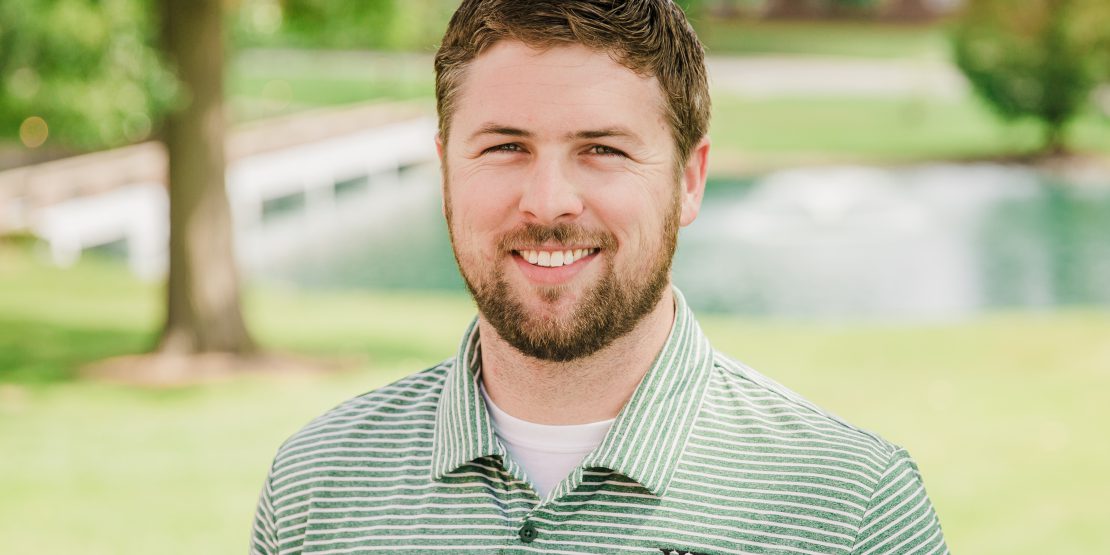Joe Davis
Instructor of Education and William Woods alumnus (bachelor’s degree and master of education)
Expertise: Leadership and Team Building, Digital Literacy, Behavior Intervention, and Policy and School Law
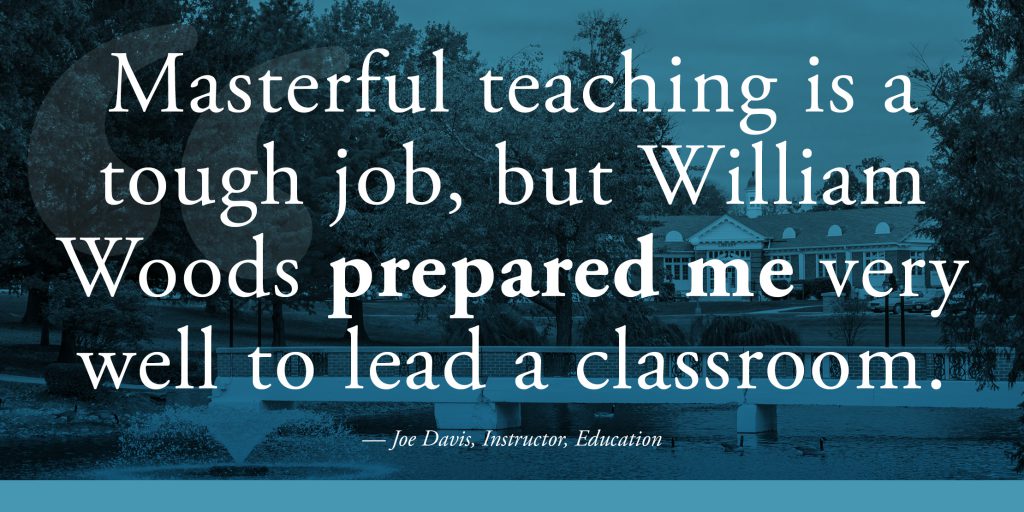
An Early Start to an Education Career
I was born in the city of Fulton, home of William Woods. My family has lived here in Callaway County for seven generations. I went to Fulton Public Schools and my mom was a special education teacher and reading interventionist in the school district. Looking back, I was very lucky to have two different perspectives on education: as a student, but also behind-the-scenes through my mom.
I realized early on that I enjoyed working with children and wanted to go into education. I taught martial arts, enrichment, and summer school classes, so I had a lot of experience interacting with kids. My enjoyment has always come from this type of interaction with other people, which is a very good passion for people going into education.
I felt like I could make a big impact as a teacher, especially at the elementary level. There are very few men working in elementary schools and I wanted to act as a positive male role model in students’ lives.
Majoring in Education
With that career goal in mind, I decided to major in elementary education at William Woods. I already had a lot of connections to the school: my mother and sister both went here, two great aunts were faculty members, and my great-grandfather worked in the horse barns back in the 1940’s. I knew the university had a lot of connections with local schools, and I enjoyed the small class sizes and the opportunity to build relationships with my professors.
The education program back then was very similar to what it is today. It’s still very focused on children. From day one, we were interacting with kids and applying what we were learning in class to actual classrooms.
Into the Classroom
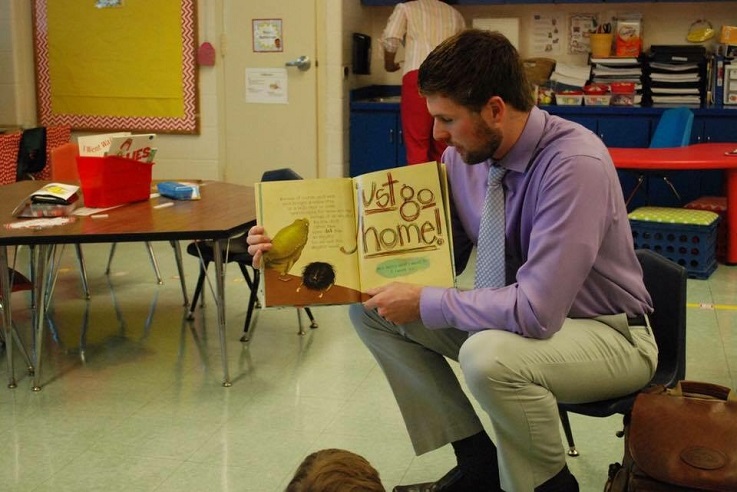
My first job out of college was teaching fifth grade at the same elementary school I attended. Working alongside my former teachers was a unique experience. I remember thinking it was like stepping into the big leagues. I was going to have my own classroom and I took that responsibility seriously.
Many education students debate what level they should specialize in: elementary, middle, or high school. For me, elementary school was the perfect fit. I liked having my own classroom and teaching all of the different subjects: math, science, social studies, reading, spelling, etc. The only things I didn’t teach were the specialties, like art, physical education, music, and library. Some students find teaching this full spectrum intimidating. For example, I hated math growing up and dreaded teaching it. But once I started, it actually became my favorite subject to teach.
There’s a lot of planning involved with being a teacher and it’s a challenge, but one that I enjoyed. I also benefited from a lot of curriculum and teaching manuals that were already set up by the school, as well as support from my colleagues. I was convinced that masterful teaching, especially at the elementary level, was one of the toughest jobs on the planet. But William Woods prepared me very well to lead a classroom.
Entering Graduate School and Administration
After teaching for about two years, I came back to William Woods for my master’s degree in education. I have always been somewhat ambitious and knew I wanted to explore educational leadership. I love teaching but wanted to expand my perspectives.
The MEd was an 18-month program where you took a different class every eight weeks. This setup, focusing on one class at a time, made it easy to balance the work of grad school with a full-time teaching job. It was also a cohort model, so you were in the same classes with the same group of students. Many of my fellow classmates were other teachers and leaders from around the area, and I developed close relationships with them. The activities and discussions were always relevant, and I found myself applying what I was learning to my classroom. One of our professors was a local principal and shared a lot of wisdom that prepared me well. Overall, it was a fantastic networking opportunity that helped me see things from a different, leadership-based perspective, which I had never done before.
Once I earned my master’s, passed the school leader licensure assessment, and got my initial school administrator certification, I was incredibly lucky and landed a job as an assistant principal at an elementary school in the same district in which I had taught. I was working as an administrator with a lot of master veteran teachers, so I knew I was going to have to prove my value very quickly. I made it a priority to go to every single classroom, introduce myself to students, and start building relationships. I wanted to break the concept of the vice principal being the person who just handles school discipline. I think I developed more positive relationships as an administrator than I did as a teacher.
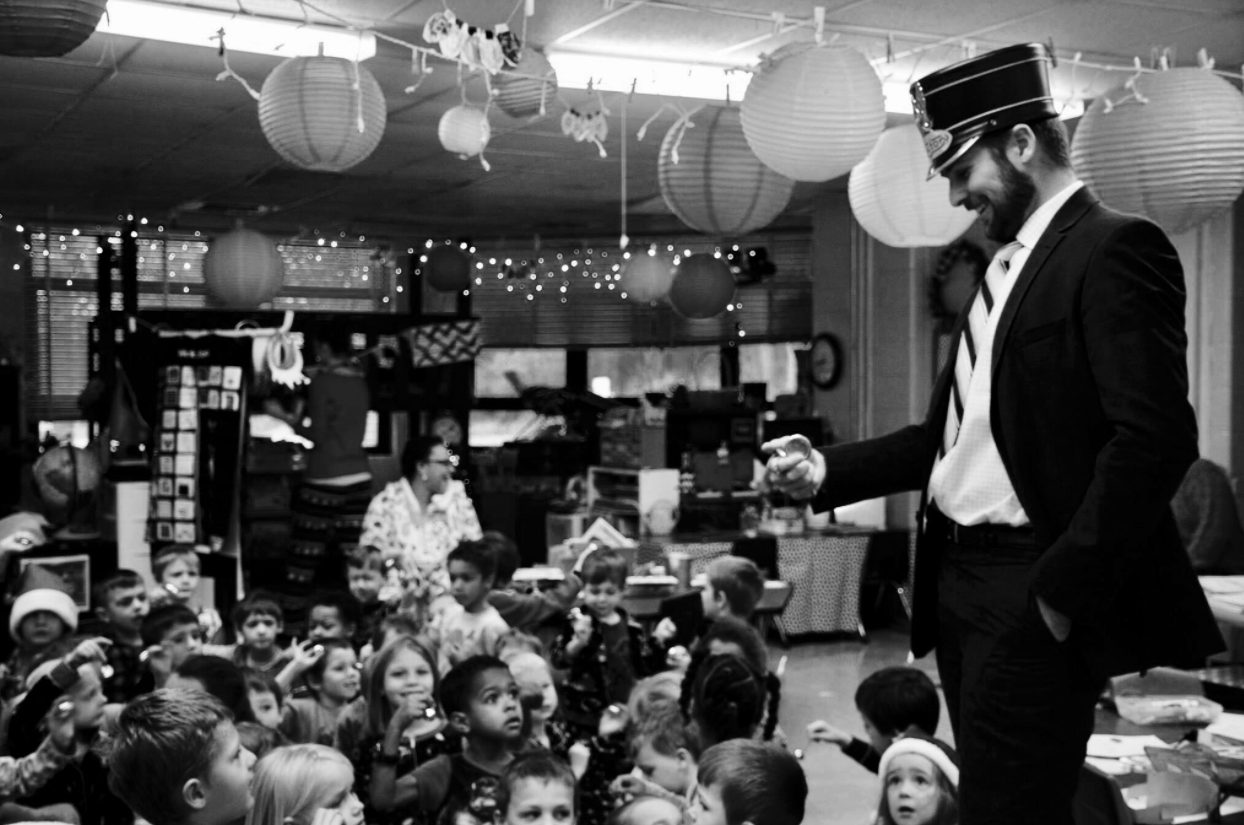
My passion for educational leadership has led to a number of unique experiences: I am a graduate of the Missouri Leadership Academy (a cohort of school principals and teacher leaders from around the state); I attended the 2016 American Wilderness Leadership School in Wyoming; I serve as a ruling elder at the First Presbyterian Church in Fulton; and am currently working on my doctorate in educational leadership and policy analysis at the University of Missouri.
Back to College
I learned more in my time as an assistant principal than I could ever have imagined. But one day, I happened across a job opening at William Woods for an education professor. I had always thought that later in life I might go into higher education. I knew the people at The Woods and enjoyed my time here, so I applied — not really knowing what to expect. When I was offered the job, I was ecstatic!
I absolutely love teaching at William Woods. I like working with students again, sharing my experiences, giving my perspective on what education is like right now, and teaching them about what they can expect in the classroom. One of the best things about our education program is that our small class size means I’ve been able to get to know my students very well.
Being an Education Major at William Woods
The education program at William Woods is designed to prepare teacher candidates for a high-impact career in the profession. Our classes emphasize content and pedagogy (the “what” and “how” of teaching). As an education major, your early classes will focus primarily on foundational knowledge, like educational technology and multicultural education. As students continue through the program, they build and expand on this framework, taking more rigorous and specialized classes that require higher levels of thinking.
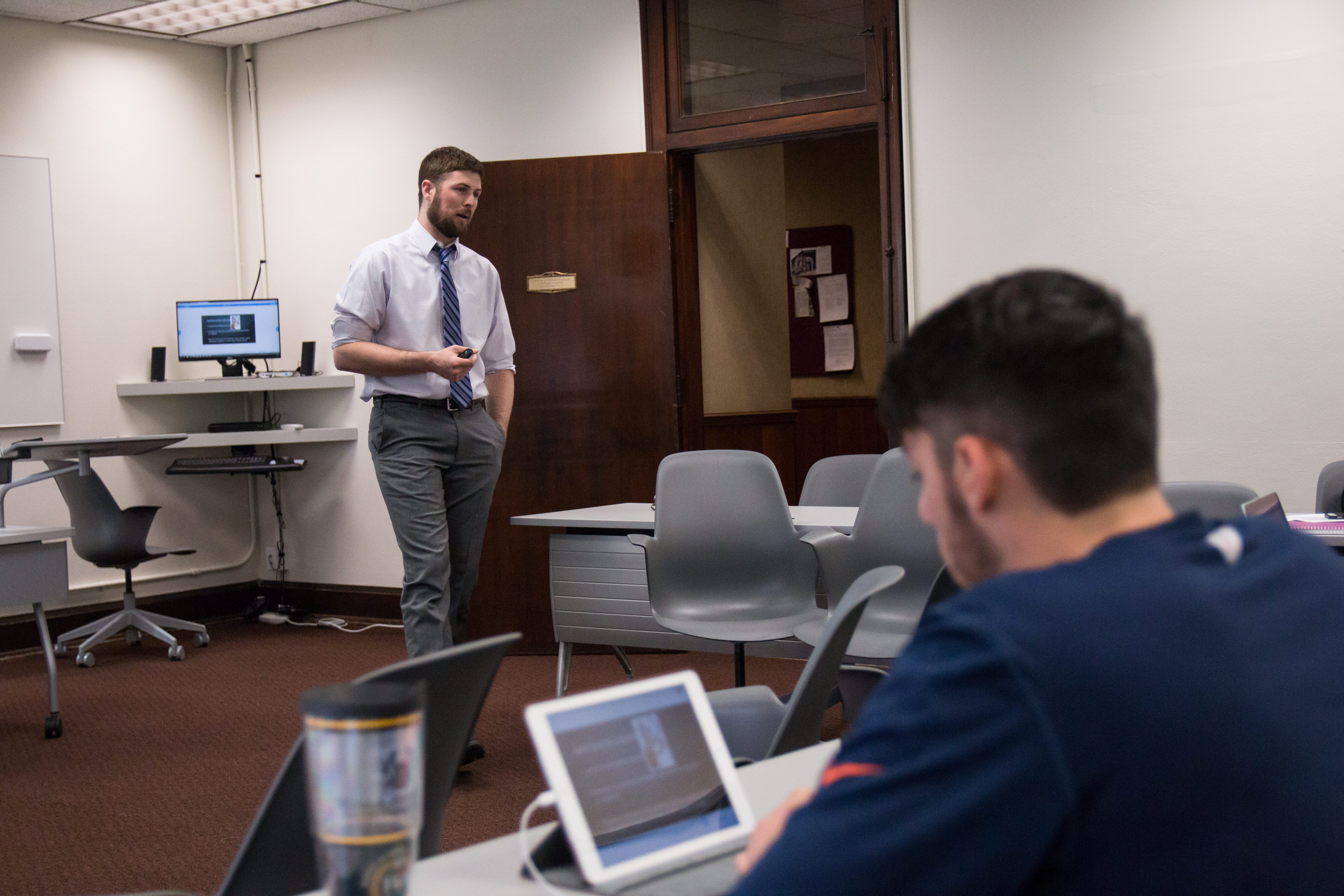
By year two, students will be getting their first in-field experiences, observing local classrooms and working their way up to administering assessments and teaching lessons. Of course, the culminating experience is student teaching in senior year. During this semester, students will experience first-hand the joys and challenges of teaching.
Throughout the program, the education faculty works closely with our students, ensuring that they are prepared for the rigorous content exams and other certification requirements to become a licensed teacher.
Foundations of Education
My favorite class to teach is Foundations of Education. It’s an introductory class that gives an overview of everything in education and is one of the first education classes students take. It helps you appreciate the topic more and prepares you for the rest of the education curriculum. During the class, students will create their first lesson plan and develop a philosophy of education.
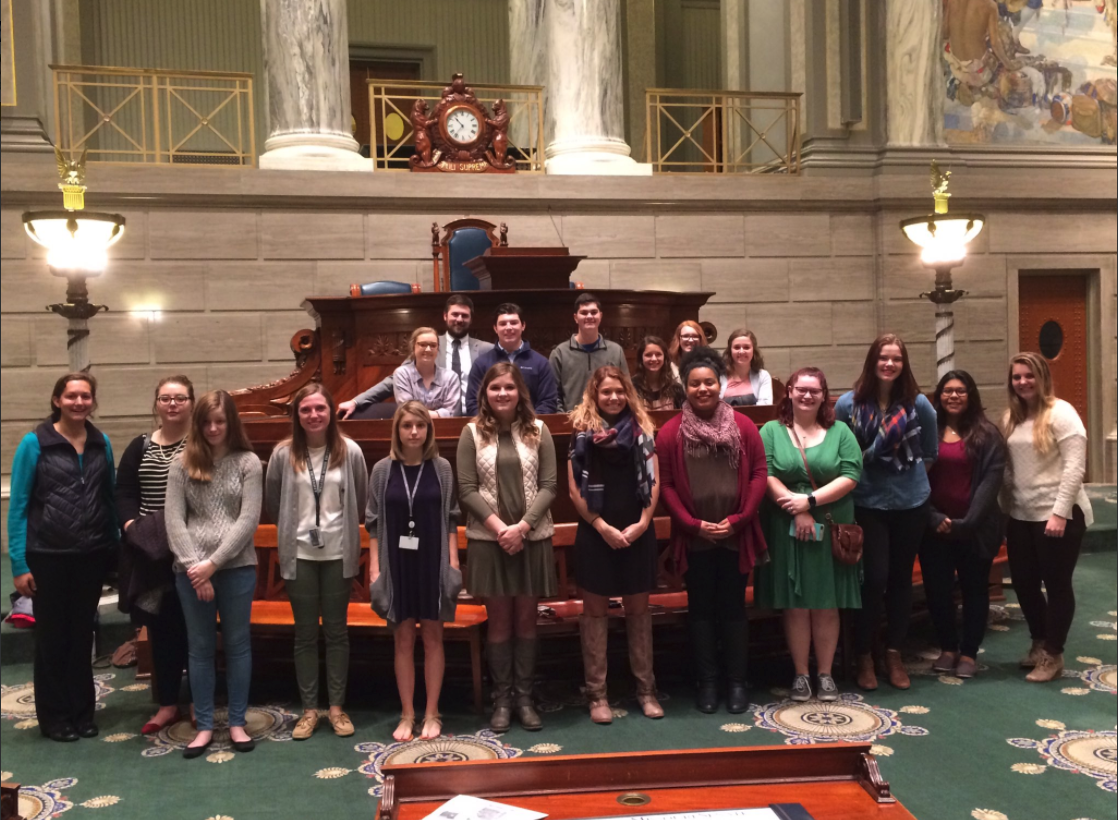
As a part of that class, I take students on a trip to Jefferson City (the capital of Missouri) to learn more about the people making the laws affecting teachers. Students meet with their state representatives in the Capitol building and people at the Department of Education and Secondary Education (DESE), the state body in charge of education. Teachers sometimes complain that they have no input in the education laws. I want our students to know that they can visit influencers and actually have their ear.
Trends in Education
The education field is constantly changing and our department is very attuned to those changes. We do a good job of keeping track of the regulations and work closely with our partners at DESE as we update our curriculum to better prepare students. We have great relationships with local schools and constantly communicate with teachers to find out what is going on in the classrooms and relay that up-to-date information to students.
In education today, many people focus on how to utilize technology effectively in the classroom. But I think an even more important trend is encouraging a curriculum that builds in problem-solving skills, rather than just getting an answer. How can we encourage kids to reflect and explain why that is their answer? I also recently went to a conference about a new approach to student teaching called co-teaching, so I’m looking forward to incorporating that into my classes.
Education is often a pendulum of trends: things that may have happened 20 years ago and will probably happen again 20 years from now.
Focus on Classroom Engagement
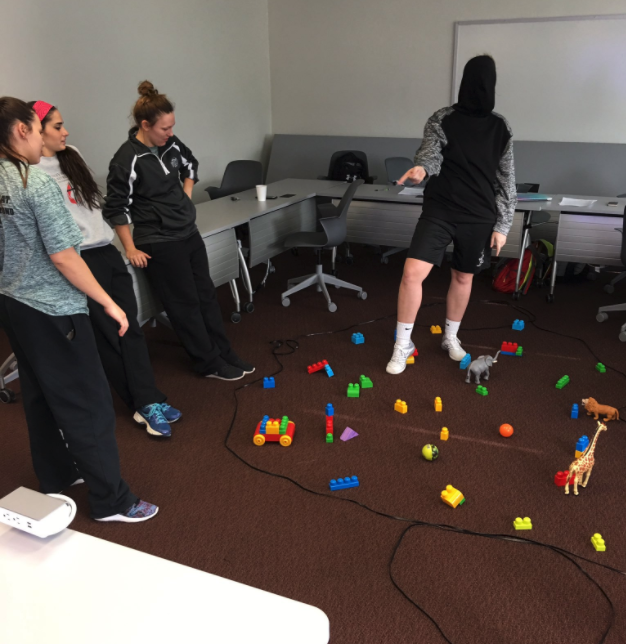
One thing that doesn’t change is the ability to engage and care about students. In all of my classes, I try to emphasize how important that engagement is. If you can engage a kid, you help them academically.
My office is filled with activities and supplementary materials. There’s a lot of creativity involved with engaging younger students and keeping them interested without being gimmicky. You have to hook them. I model this idea with my students, practicing different activities their future students might enjoy. For example, I might say “for tomorrow’s class, meet me in the library and bring a flashlight.” It gets them hooked.
Ahhh snap, time for a #MysteryHook #EDU392 pic.twitter.com/The4cOJMCs
— Joe Davis (@JosephDavisEDU) October 6, 2017
Dave Burgess is the author of Teach Like a Pirate and he uses a wonderful analogy about engagement and a BBQ grill. He says that you don’t put a steak on a cold grill; you heat the grill up first. The same is true of learning. I try not to throw the content on the “grill” cold. By heating up students with thinking activities and lesson hooks, I have found my teaching to be much more effective.
Teachers have to be skilled at taking anything and turning it into a learning activity. For an end of the semester exam, I do an activity called Glop Shop where a student has to select something from a big box of random items and create an engaging activity based on that item.
Hands-On Experience
In this program, we try to get our education students into actual classrooms early and often. William Woods students are very lucky in that there are four separate school districts in our county and we have close relationships with all of them. Our goal is to put students into those settings as frequently as we can.
Thank you @McIntireElem for letting us help out at STEAM night. It was a blast! #WWU211 pic.twitter.com/X0WZ9hslXE
— Joe Davis (@JosephDavisEDU) September 26, 2017
You may start slowly, first observing classes, then teaching a single lesson, and finally working your way up to student teaching your senior year, where you’re in the classroom for the whole semester.
I taught Elementary Math last semester and one of our activities was going into a local classroom so students could teach an actual math lesson. It was pretty daunting, but eye-opening for them. They planned the activities, and some parts went well and some they struggled with. But the ability to come back to our class the next day and reflect on the experience was important.
CPI Training
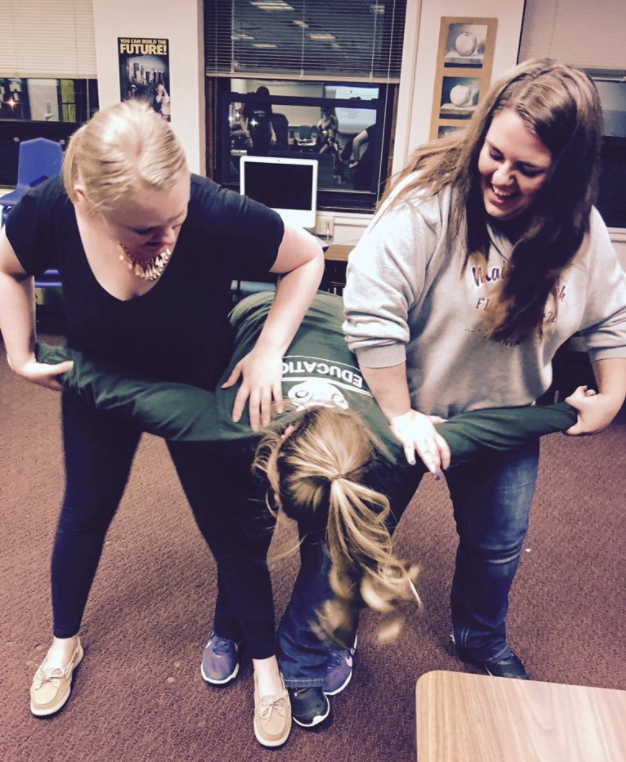
The biggest thing that has affected my career was an email I received when I was a classroom teacher from our director of special services. It said they were looking for someone to become a CPI instructor. CPI is the Crisis Prevention Institute, an international organization that works with professionals (including teachers) on how to safely handle anxious, hostile, or violent behavior. As a teacher, knowing how to safely restrain students, protect yourself, and prevent/diffuse a crisis situation is vital.
I went through the intense four-day training, learning how to respond to different behaviors. It helped differentiate me in the school and I became the “CPI guy”. Even though I was a relatively new teacher, I was called if there was a behavior issue in the school. This skill helped me secure the assistant principal job.
When I came to William Woods, I immediately started planning how to implement this training with our education students. They now leave the program fully certified in CPI, which is a great experience, useful for when they step out into the field, and looks good on their resume. Very few education programs offer this training, so it’s a unique opportunity for our students.
What Makes a Good Teacher
There are many reasons why people choose teaching as a profession. Many students say they have been inspired by a former teacher who helped them. Others want to create a better, more effective learning environment. Some like the idea of being role models for young people. Whatever the reason, a patient and compassionate desire to help others is a must.
To succeed as a teacher, you have to be a good communicator. How do you communicate with people and pass information to them? We can help you hone that skill, but it’s hard to teach someone who isn’t comfortable talking to others. In a classroom, you have to be able to communicate with everyone in the room and that can be a real challenge as everyone learns differently.
Reliability is also crucial. When you start doing your student teaching, you have a lot of people relying on you. Working in a classroom is rigorous and you need to act professionally and have a strong work ethic.
Relationships are key in education. You have to be able to work with other people—not just students, but parents, other teachers, and administrators.
The last component would be your ability to manage the classroom and behaviors in that classroom. This is probably one of the most difficult things for teachers to figure out. Principals know when they hire a new teacher that they are going to struggle with this. William Woods has an education advisory council, made up of local teachers and principals, that comes to campus to discuss issues in education. One of the issues we talked about recently was this importance of preparing teachers for classroom management.
When I joined the university as a professor, that was going to be my focus. How can I try to support students in classroom management? Here at The Woods, we prepare education students for that challenge. A lot of it has to do with building their self-confidence, putting students in practice situations as much as possible, and showing them how to respond to them appropriately.
William Woods is just a great place to grow and learn. We are very student-centered, flexible, and adaptive. We support our students and give our majors an edge for when they go into their careers as educators.
| Learn more about the William Woods Education programs |

